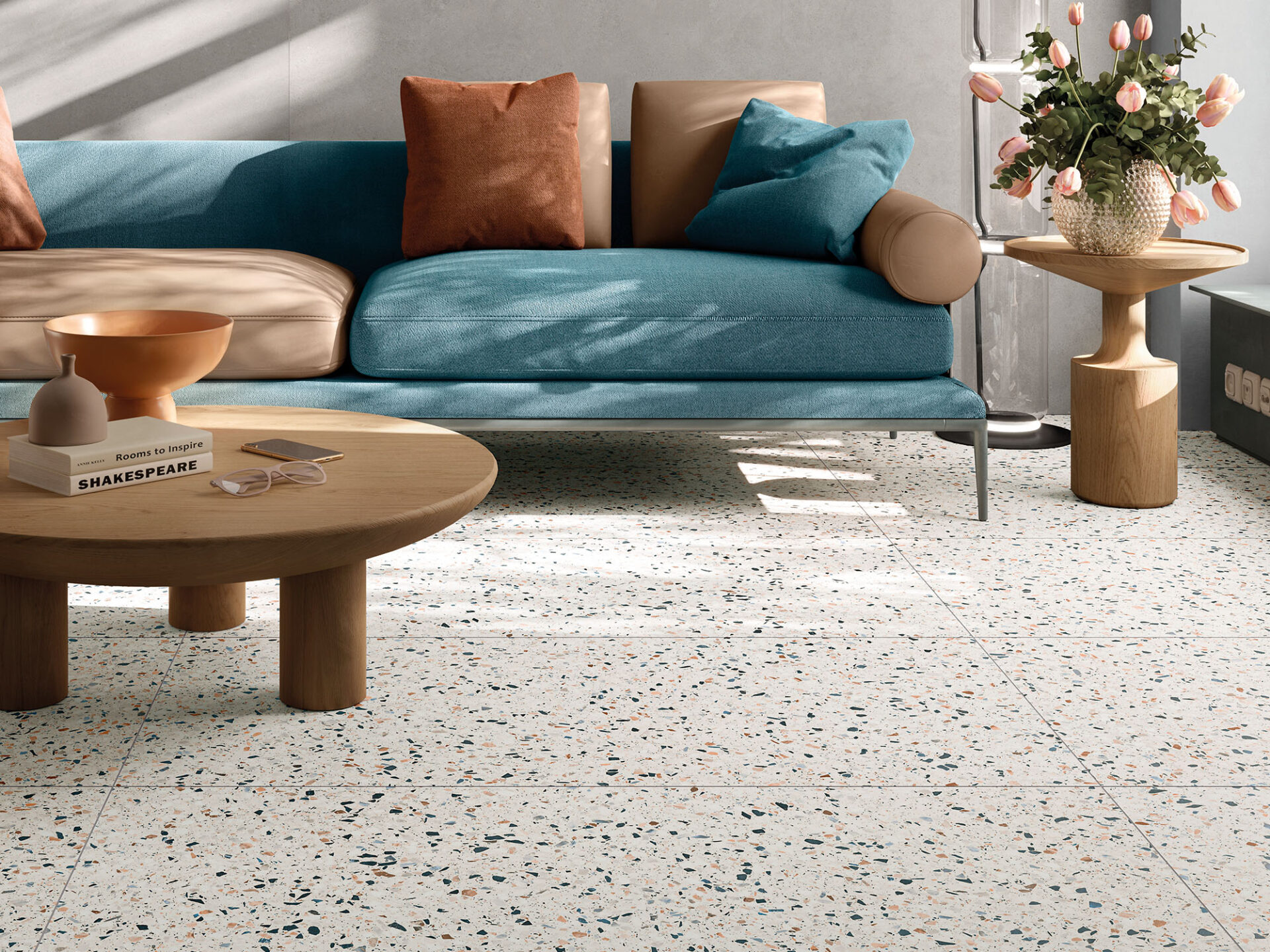Posted in Minoli
7th February 2023
Today we turn to Trend 03 – Natural and Manmade Materials – in the third of the published extracts from Minoli’s Design Trends Report.
The further development of porcelain tiles that reproduce the appearance of different natural and manmade materials, will offer exciting new opportunities for interior designers, architects and construction firms.
Whether applied independently or combined to complement within design schemes, the welcoming warmth of wood-look porcelain and the appeal of hand-cast concrete-effect tiles are set to remain frequently specified as property development preferences for 2023 and beyond.
The veracity and variety of wood-effect tiles realistically replicates the timber tones of so many species. Across the breadth and depth of Minoli’s wood look collections, specific ranges offer up distinctly different design qualities to support the trend of incorporating natural finishes into modern interior designs.
Take for instance the Essenza Oudh series, which embraces the urge to get back in touch with nature using materials with tactile textures and warm, natural colours. These wonderful wood-effect planks have the gorgeous graining and gnarly knots of their organic counterparts, but with all the technical advantages of a high-performance porcelain product. This is a very versatile range with seven creative colours that echo the elegance and texture of timber.

The very latest advancements in wood-effect porcelain have also seen the introduction of outdoor specification product lines, with 20mm thickness and R11 slip resistance ratings. With these exterior use attributes, ranges like Essena Oudh, Twenty and Twelvenoon have become viable and very desirable alternatives to timber or composite decking.
Over natural wood, porcelain tiles have practical advantages in that they will not shrink, split or splinter, warp or show wear, and they are ultimately easier to clean and maintain. Being almost impervious to moisture and dirt, they are better suited for use in humid and wet areas, will not rot or attract algae, are highly resistant to extreme temperatures and are excellent conductors of underfloor heating.
Turning to porcelain tiles that replicate manmade materials, the most recent interpretations of concrete and cement offer soft, subtle and sophisticated surfaces, with layered colourways that create depth and movement.
With the appearance of perfectly poured concrete, Viceversa brings a sense of urban indulgence to the design schemes in which it is applied. With eight sumptuous and superfine colour variations, and an additional Terrazzo effect tile, there’s a definite depth to the overlaid shades that feature in the microtextured finish. As a backdrop to brighter decorative elements, Viceversa allows you to play with other contrasting colours.

Whilst quite minimalist in pattern and appearance, darker shades of concrete-effect surfaces can be used to create remarkably strong structures within built environments, creating interesting perspectives. Paler varieties can have an almost cloud-like composition, acting as a neutral canvas against which to showcase bright and bold fixtures and furnishing.

Later this week, we’ll discuss how metallics and brighter tints and tones are being used to create feature areas and contrasting colour-blocks within interiors, and you can also view or download the full report in advance, from our brochure page here.